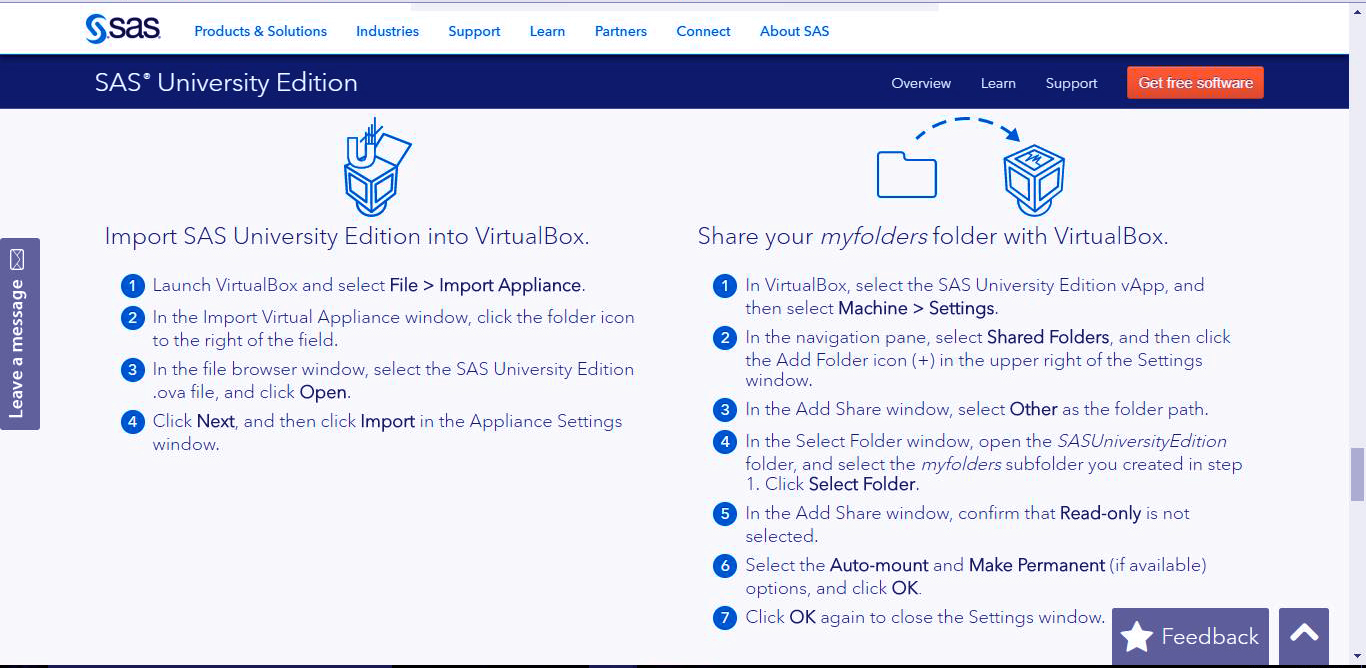

- #UPLOADING A SAS DATASET TO SAS UNIVERSITY EDITION FOR FREE#
- #UPLOADING A SAS DATASET TO SAS UNIVERSITY EDITION INSTALL#
- #UPLOADING A SAS DATASET TO SAS UNIVERSITY EDITION SOFTWARE#
Overview: There are typically two types of SAS Deployments: Some people use many of the capabilities of the SAS System, and others use only a few. How you use SAS depends on what you want to accomplish.
#UPLOADING A SAS DATASET TO SAS UNIVERSITY EDITION SOFTWARE#
SAS is an integrated system of software solutions that enables you to perform the following tasks: If you have issues, the SAS Community Forums - Analytics U are the vendor forums to obtain support, or ask a question on Stack Overflow.


Then, start the SAS virtual machine, and once it's started you can connect via your web browser, connecting to if you used the default settings. Create a folder for SAS to use as its local storage (so you can put files in a location SAS can see them), and set that up as a Shared Folder in the machine settings dialog box. Import the SAS VM as an appliance ("Import Appliance" in VirtualBox). Once you've done so, you need to set up the virtual machine in VirtualBox. Then download the newest SAS University Edition disk image, which is around 2GB and requires setting up a SAS.com profile.
#UPLOADING A SAS DATASET TO SAS UNIVERSITY EDITION INSTALL#
To install it locally, you first download and install Oracle Virtualbox 5.0 (Windows/Mac/Linux). See the installation guide on SAS.com for up to date instructions, or below for the current (July 2016) instructions. It is available from SAS directly, currently at the SAS University Edition page, either by running an AWS instance (on the free tier) or by downloading a virtual machine locally.
#UPLOADING A SAS DATASET TO SAS UNIVERSITY EDITION FOR FREE#
SAS installation typically is performed by a SAS administrator, who will install the software from a software depot that is customized for the site (and often provided by SAS Institute directly).įor the purpose of learning SAS, there is also the free SAS University Edition, which can be installed for free for educational purposes by anyone on a Windows, Mac, or Unix/Linux computer. SAS can be run in client-server model, using either the Enterprise Guide thick client or the SAS Studio thin (web-enabled) client, or in "local server" mode where a fully functional SAS system is present on a local machine (Windows or Unix/Linux desktop or server running in interactive mode) and run either in Display Manager mode (the local client) or through one of the client-server clients above (connected to the locally installed server).


 0 kommentar(er)
0 kommentar(er)
